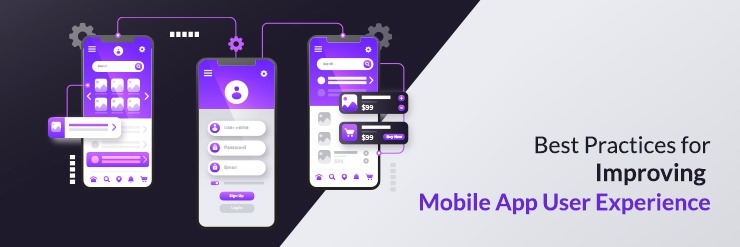Did you know 25% of apps downloads are opened only once after download? The majority of users don’t hesitate to delete apps they don’t find useful.
This is certainly because the users of an app aren’t just interested in a mobile version of the website when they download an app. They instead look for a completely unique and engaging experience. There are tons of apps available on the app stores. So, choosing and dedicating some space in users’ devices for certain apps take their consideration and time. As a result, they want a product that justifies their selection and makes their life easier and simpler, or enjoyable, depending on the app’s category.
It is high time mobile app user experience must design with the ultimate planning and design guide. You cannot overlook the user experience design during the successful mobile app development process. The majority of people on the planet access the internet from their mobile devices rather than from their desktops. It is no longer acceptable for UX designers to pay no attention to the vast majority of those users. It’s imperative that mobile designers implement mobile UX best practices throughout the entire design process.
Focus on User Goals
When someone uses a mobile app or website using their smartphone, their goal is likely different than when they use a traditional desktop site. In a restaurant app, for example, visitors are likely to want to do only a few things: view the menu, make a reservation, or find directions. Typically, they won’t need to search for the full history of the business – it can be hidden away in the menu.
Put yourself in the shoes of potential mobile app users and think through what they need and want. Logins are often overlooked as a critical feature that designers neglect. For instance, banking apps often require users to log in before they can do anything. Users don’t really need to sign in for certain tasks, like finding the closest ATM or nearby branch. Easy access to those features is a great way to improve UX.
Keep the Design Simple
It’s important to keep in mind that your application users have specific goals. When they encounter an obstacle, they might become frustrated, waste more time than expected, and lose their way in the process. Additionally, having unwanted functionalities and features in your mobile app will frustrate your audience and lead them astray. Therefore, designing a highly usable mobile application requires a simple and minimalistic design approach.
Intuitive Navigation
Navigation on mobile apps must be intuitive for its users. Apps and websites need to be designed in such a way that users can quickly understand how they work. This can be accomplished by utilizing recognizable design patterns and recognizable icons, including hamburger menus, the “home” icon on the home screen, and the chat bubble for messaging.
Icons that include labeled icons are even more intuitive. It keeps things easier for users and doesn’t require them to think and process a lot. The more you make the user work to find their way around the webpage, the more likely they are to exit the website or leave the app and look for something easier.
Add Consistency in the App Design
A consistent UI design keeps users from using multiple applications. When you use a custom logo and header design for your app UI, the user is assured that they are on the right path. In the same way, a consistent navigation system accords a consistent user experience. Your app will be harder to understand if you use non-conventional designs, which will frustrate your users. In order to ensure trust among users, conventions in design should be followed to keep consistency.
Reduced User Efforts
The minimization of data entry is another key mobile UX best practice. It is more likely that a person will abandon a mobile application if they have to enter more data.
On a desktop or laptop computer, four or five fields may not seem like a big deal, but if it’s a mobile device, it may be enough to turn users away, particularly if they cannot see why they are important to feed.
Offering people the option to sign up via one of their existing accounts like Facebook or Google rather than having to create one from scratch is a good way to boost conversions.
Perform Beta Testing and Make Improvements
Remote user testing is the best way to test mobile usability. After your product has been used, you can now get feedback from remote users. Following this, the app developers will turn to quality assurance and eliminate any bugs they find. As a result, user testing allows you to look at your application from users’ perspectives and enable the team to eliminate issues.
Conclusion
By incorporating the best user experience or UX design principles as part of a mobile app, users will experience a better overall mobile experience. People abandon apps and websites that don’t meet their needs in a few seconds for ones that are more user-friendly, intuitive, and streamlined.
It has become more widespread to find great mobile designs, and the expectations of users have risen even higher in regards to the results they want from their mobile apps. Mobile app design cannot be thought of as an add-on or an alternative in today’s competitive world. It instead has become the most used device for accessing the internet. Therefore, it requires a considerable amount of planning, strategy, and resources.








